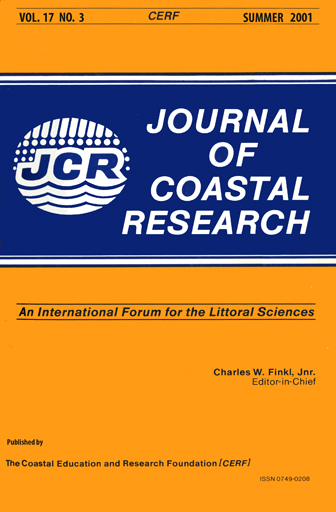Stratigraphic Evidence for Historical Position of the East Cambridge Shoreline, Boston Harbor, Massachusetts
Keywords:
Stratigraphy, mean-high water, sea level, peat, Spartina sp., rhizome, compaction, historical charts, Charles River.Abstract
Sediment cores were used to examine the stratigraphy at a site in East Cambridge, Massachusetts to ascertain its environment and the original shoreline position prior to artificial filling. Through the analysis of historical charts, sediment characteristics, and salt marsh plant species, it was determined that over 70% of the study area were above mean-high water prior to urban development. The fibrous nature of peat immediately underlying the fill material and the in-situ remains of Spartina patens and Distichlis spicata indicated a high marsh environment. The fact that the supratidal peat is below the present mean-high water is due to a combination of: (1) sea-level rise since the artificial infilling of the marsh in 1880-90s; (2) possible removal of marsh peat prior to filling; (3) compaction of peat by overlying anthropogenic fill, and (4) compaction and subsidence of underlying sediments. This study provided convincing physical evidence of the historic shoreline position that was necessary to establish former tideland boundaries.Downloads
Published
2001-07-27
Issue
Section
Articles


